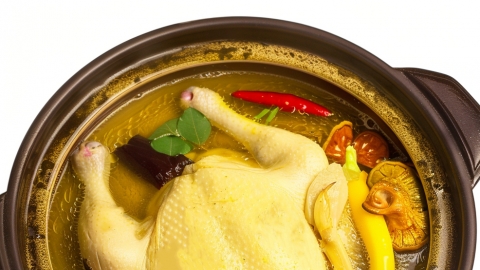What are the benefits and drawbacks of eating old hen?
Generally speaking, the benefits of consuming old hen include supplementing protein, nourishing qi and blood, enhancing immunity, promoting lactation, and improving osteoporosis; while the drawbacks include inducing gout, increasing the burden on the kidneys, causing allergies, indigestion, and elevated blood lipids. Detailed analysis is as follows:

I. Benefits
1. Supplement Protein
Old hens are rich in high-quality protein, with amino acid composition close to human requirements, making it easily absorbed and utilized by the body. It provides essential nutrients, maintains normal physiological functions, and enhances immune function.
2. Nourish Qi and Blood
Old hens have the effect of replenishing qi and blood. For individuals with deficiency in qi and blood, such as postpartum women or those recovering from prolonged illness, consuming old hen can help restore vitality, improve symptoms like pallor, dizziness, and fatigue.
3. Enhance Immunity
Nutrients in old hen help strengthen the immune system. For example, zinc plays a role in immune cell metabolism and functional regulation, helping the body better resist external pathogens and reduce the risk of illness.
4. Promote Lactation
For postpartum nursing mothers, old hen is a traditional galactagogue. Its rich nutrients promote milk production, ensuring successful breastfeeding and providing adequate nutrition for the baby.
5. Improve Osteoporosis
Components like collagen in old hen help enhance bone flexibility and elasticity. Additionally, minerals such as calcium provide the building blocks for bone growth and repair, offering some benefit in preventing and improving osteoporosis in middle-aged and elderly individuals.
II. Drawbacks
1. Induce Gout
Old hen is a moderate-purine food. For individuals with gout or hyperuricemia, consuming old hen may further elevate blood uric acid levels, triggering gout attacks and worsening the condition.
2. Increase Kidney Burden
Old hen is rich in protein, and excessive protein intake increases the metabolic burden on the kidneys. For patients with kidney insufficiency or kidney disease, this may lead to further deterioration of kidney function, affecting normal metabolic and excretory functions.
3. Cause Allergic Reactions
Some individuals may be allergic to certain protein components in chicken meat. After consuming old hen, allergic reactions such as skin itching, rash, breathing difficulties, and gastrointestinal discomfort may occur, with severe cases potentially life-threatening.
4. Difficult to Digest
The meat of old hens is relatively tough with coarse fibers, making it difficult to digest. For individuals with weak gastrointestinal function, such as the elderly, children, or those with indigestion, excessive consumption may cause indigestion, bloating, stomach pain, and other gastrointestinal discomforts.
5. Increase Blood Lipids
Old hen contains high levels of saturated fatty acids. Excessive consumption raises low-density lipoprotein cholesterol (LDL-C) levels and lowers high-density lipoprotein cholesterol (HDL-C) levels. Such lipid abnormalities increase the risk of atherosclerosis and further affect cardiovascular health.
It is important to control the amount of old hen consumed in daily diet to avoid health problems caused by overconsumption, especially for individuals at risk of obesity or cardiovascular diseases, who should strictly limit their intake. Additionally, when purchasing old hen, choose products from reputable sources with quality assurance to reduce the risk of food safety issues such as hormone residues, ensuring safe and healthy consumption.




